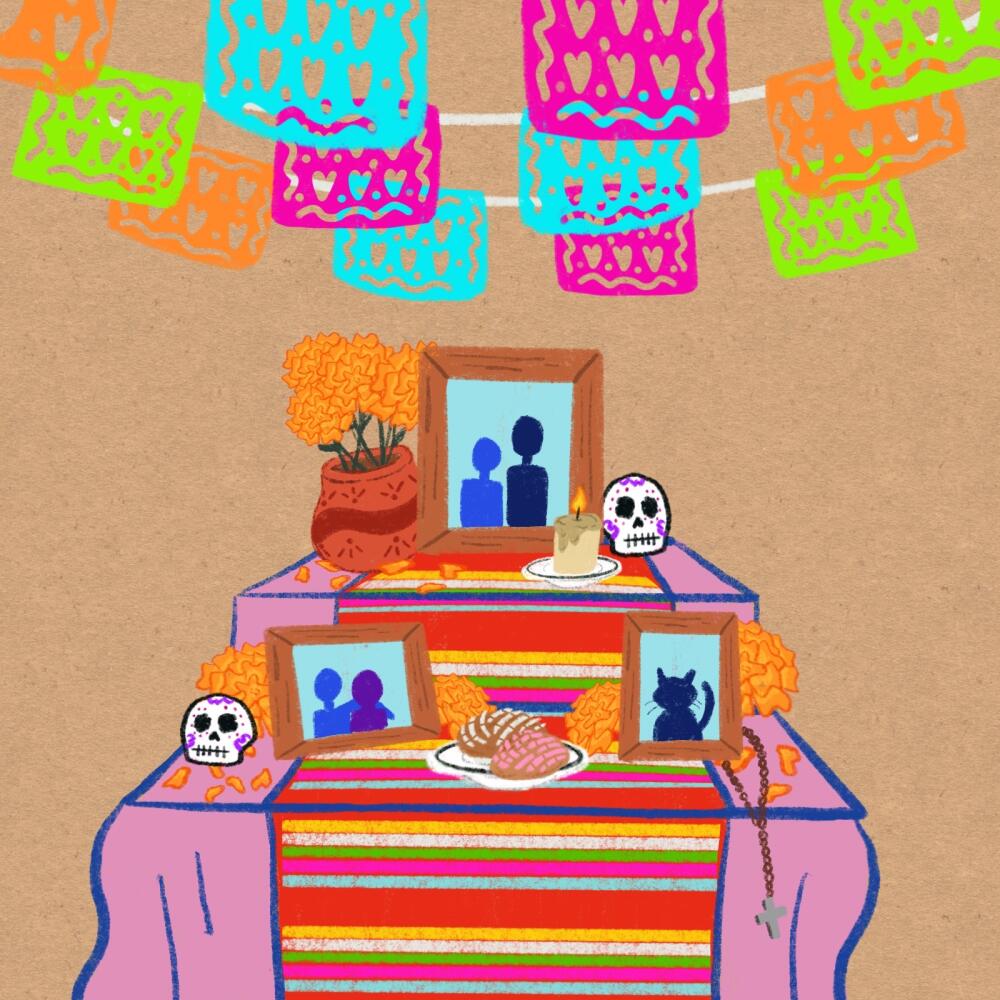
(Kimberly Trigueros / For De Los)
Most of us know what Día de Muertos is but are unfamiliar with the history behind the tradition that is now celebrated each year. Being aware of the history is just as important as the festivities. Throughout my process in this project, I have learned more about our ancestors and how the conquista really changed what could have been a different future for us.
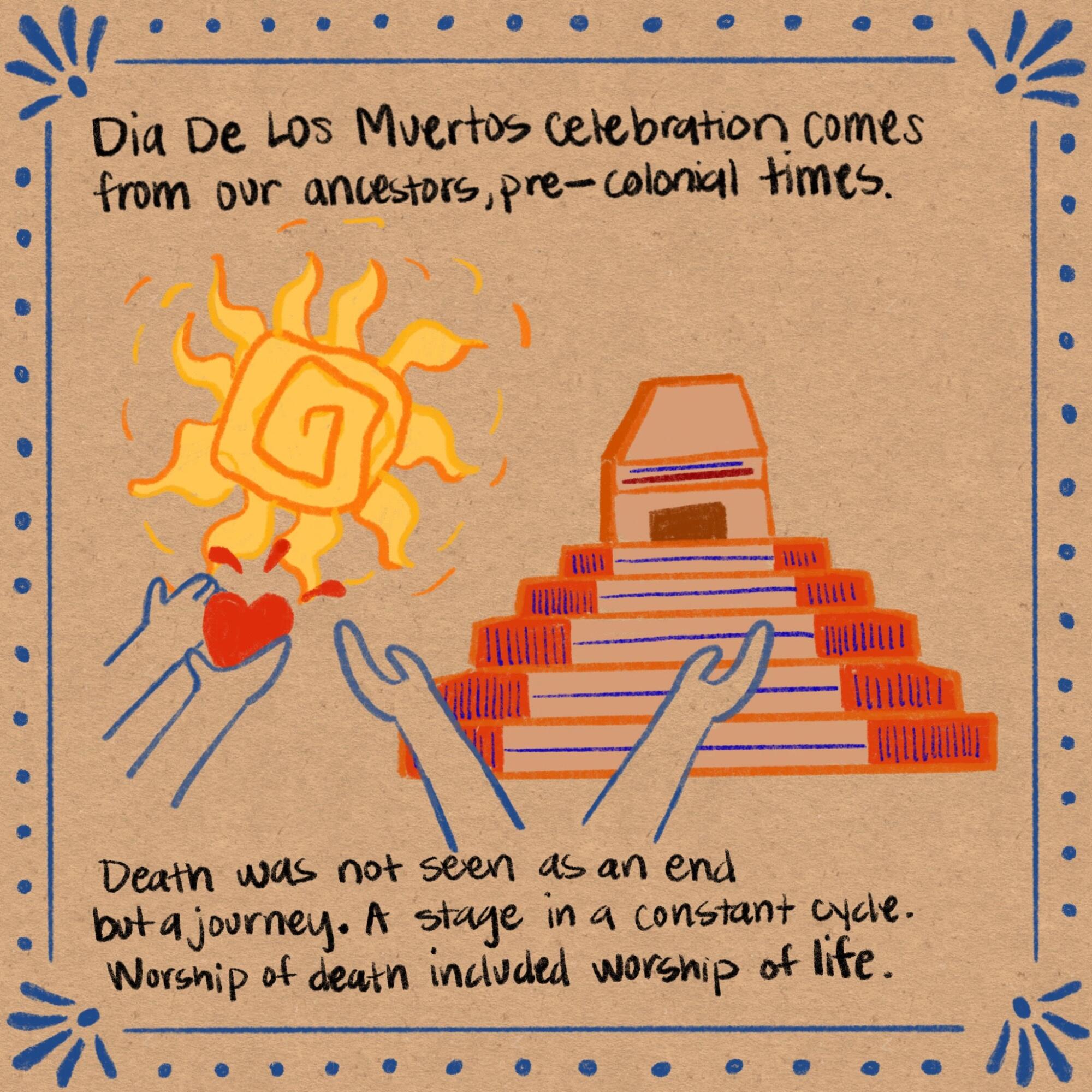
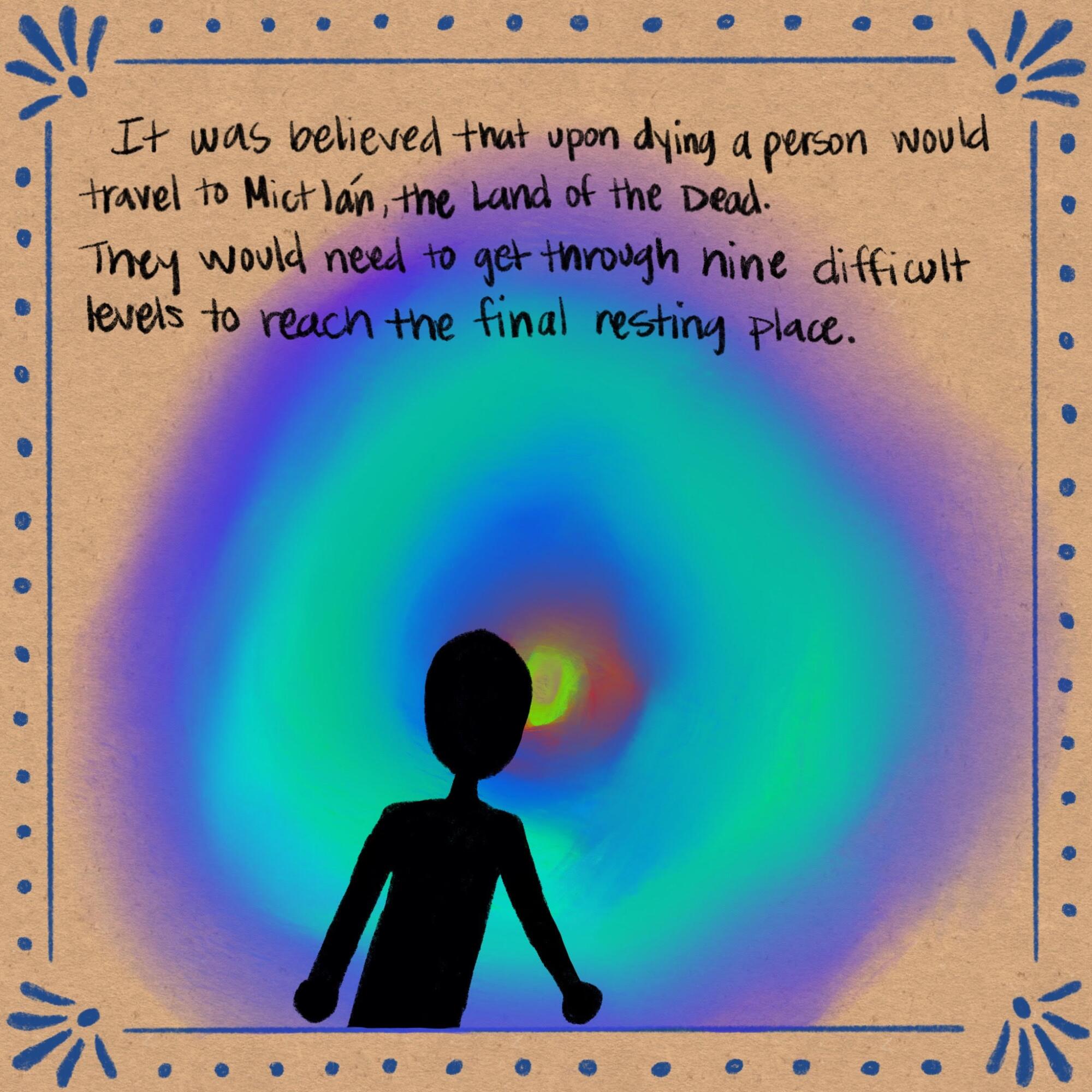
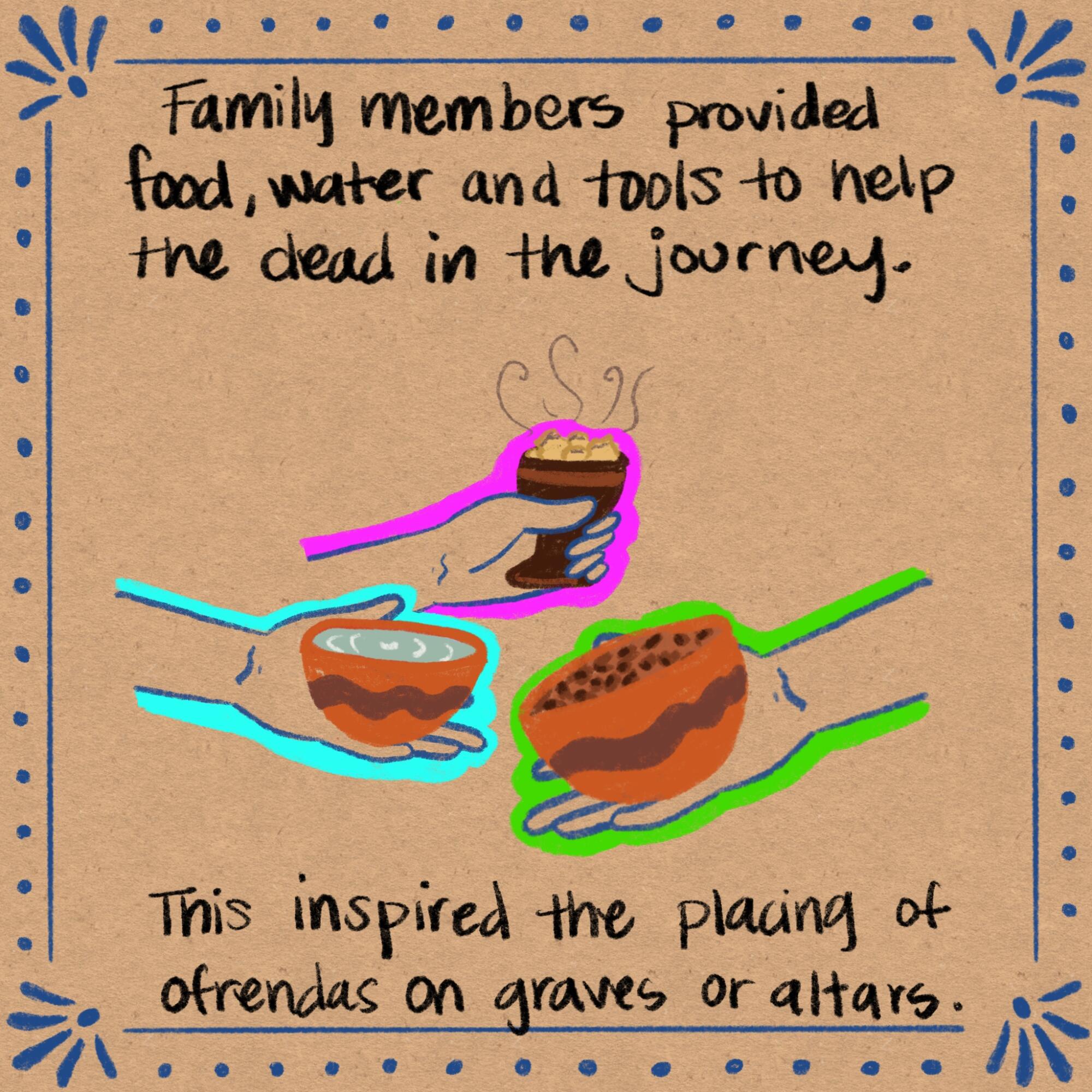
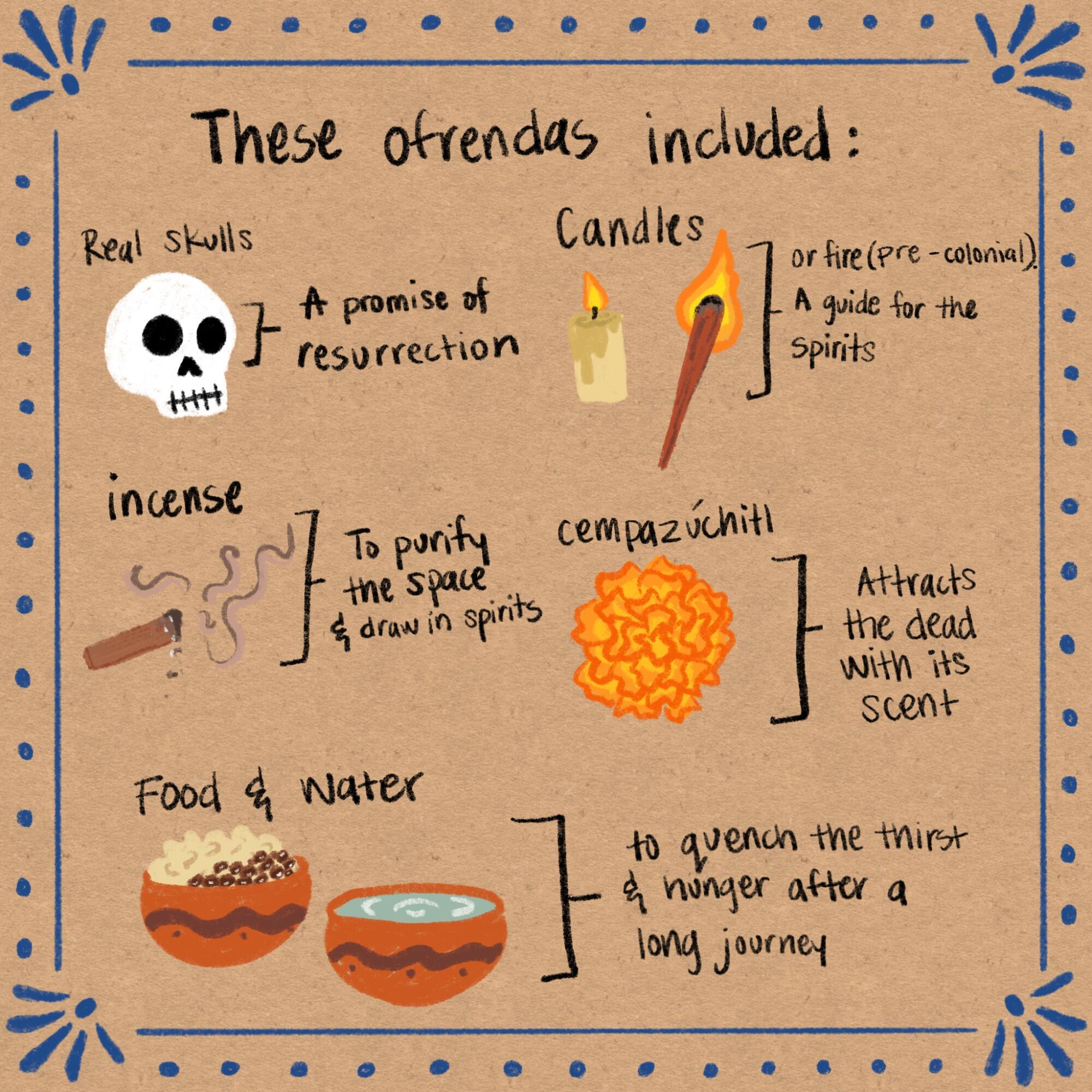
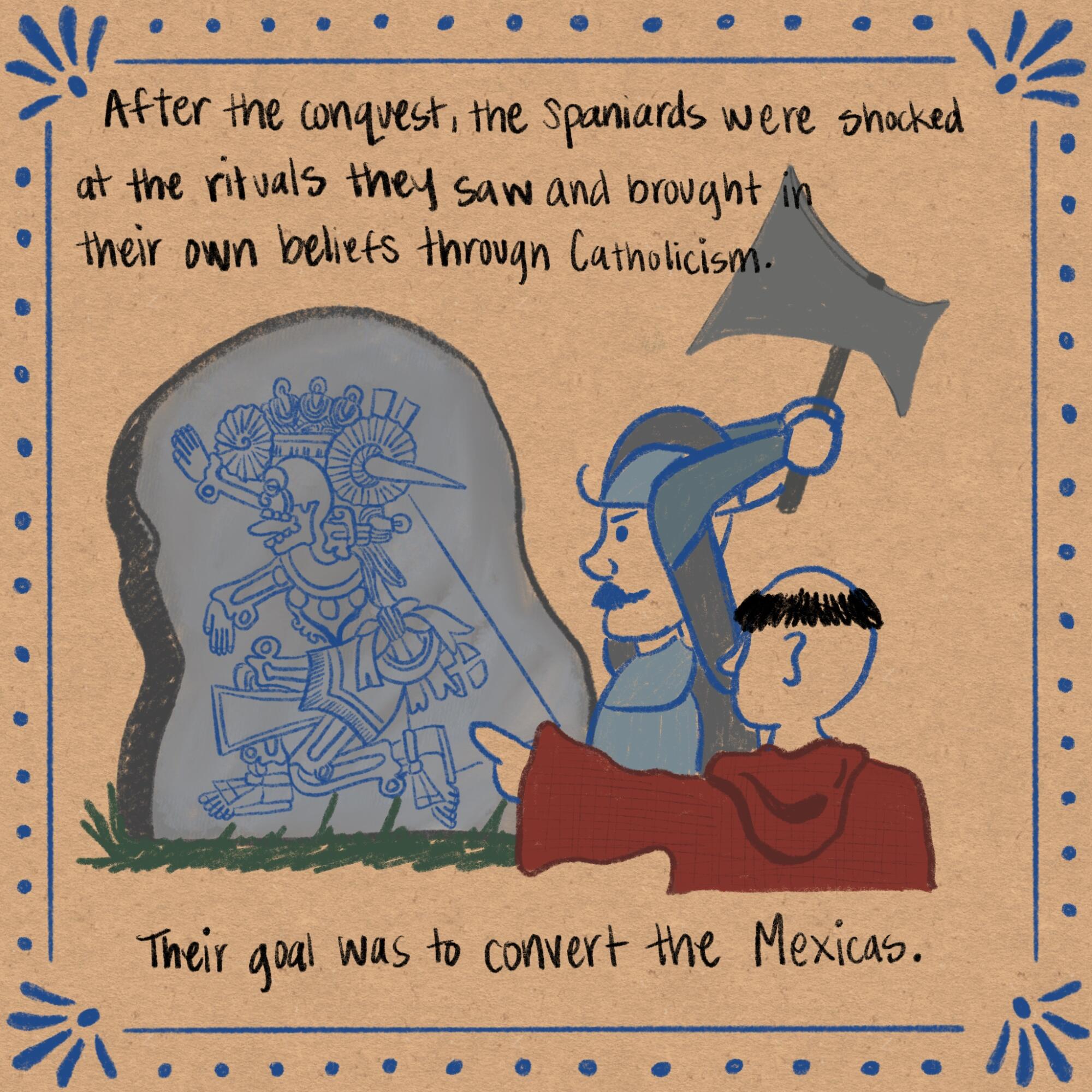
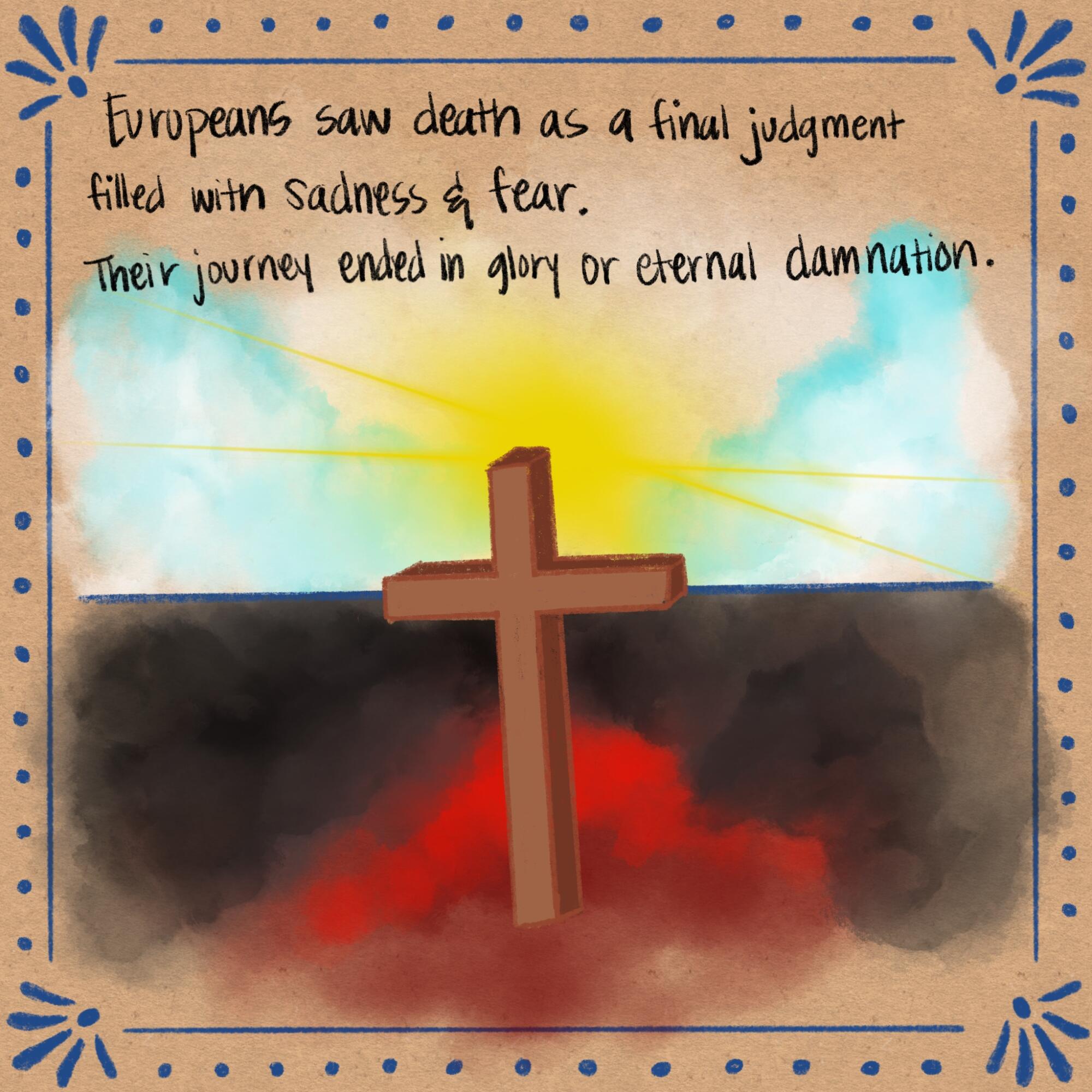
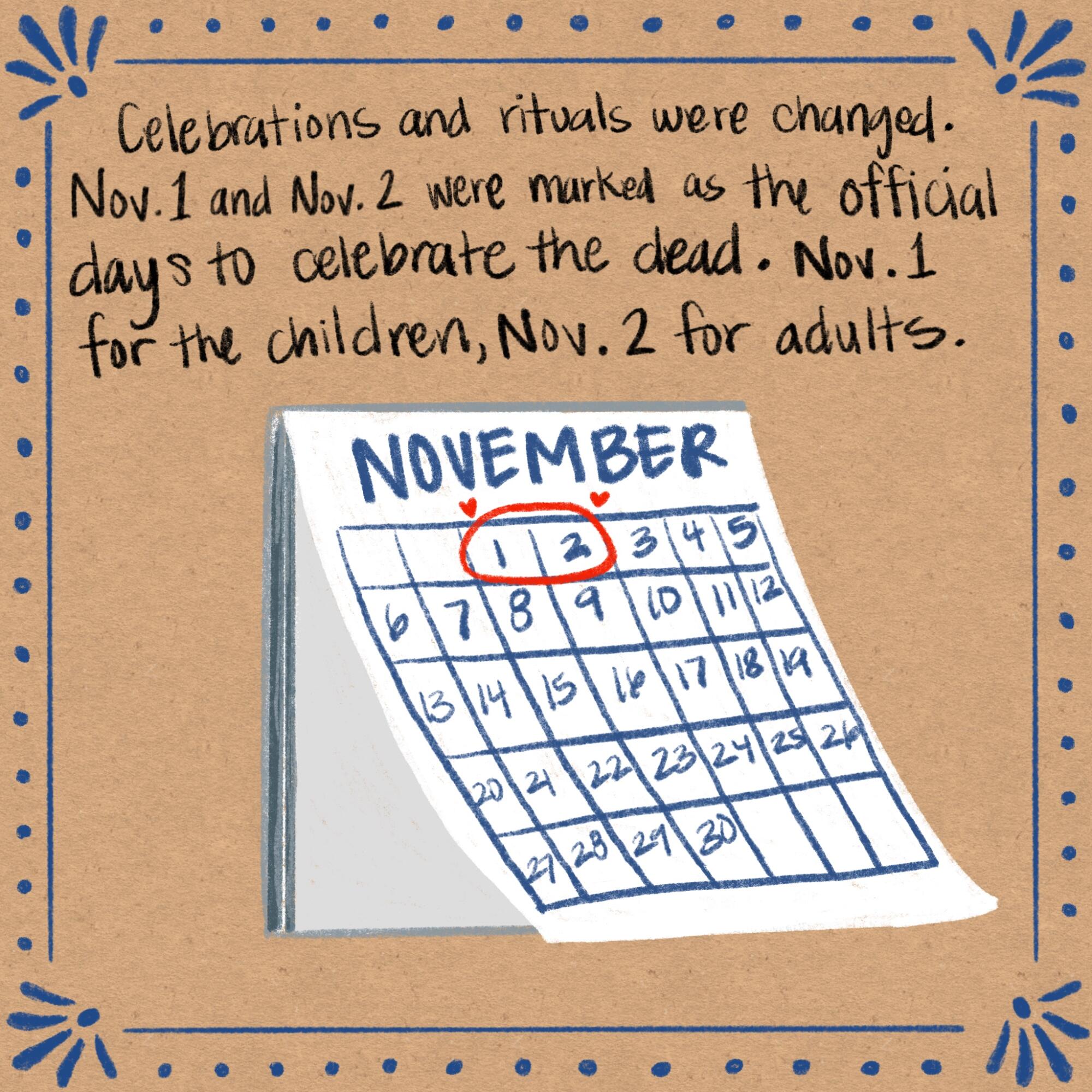
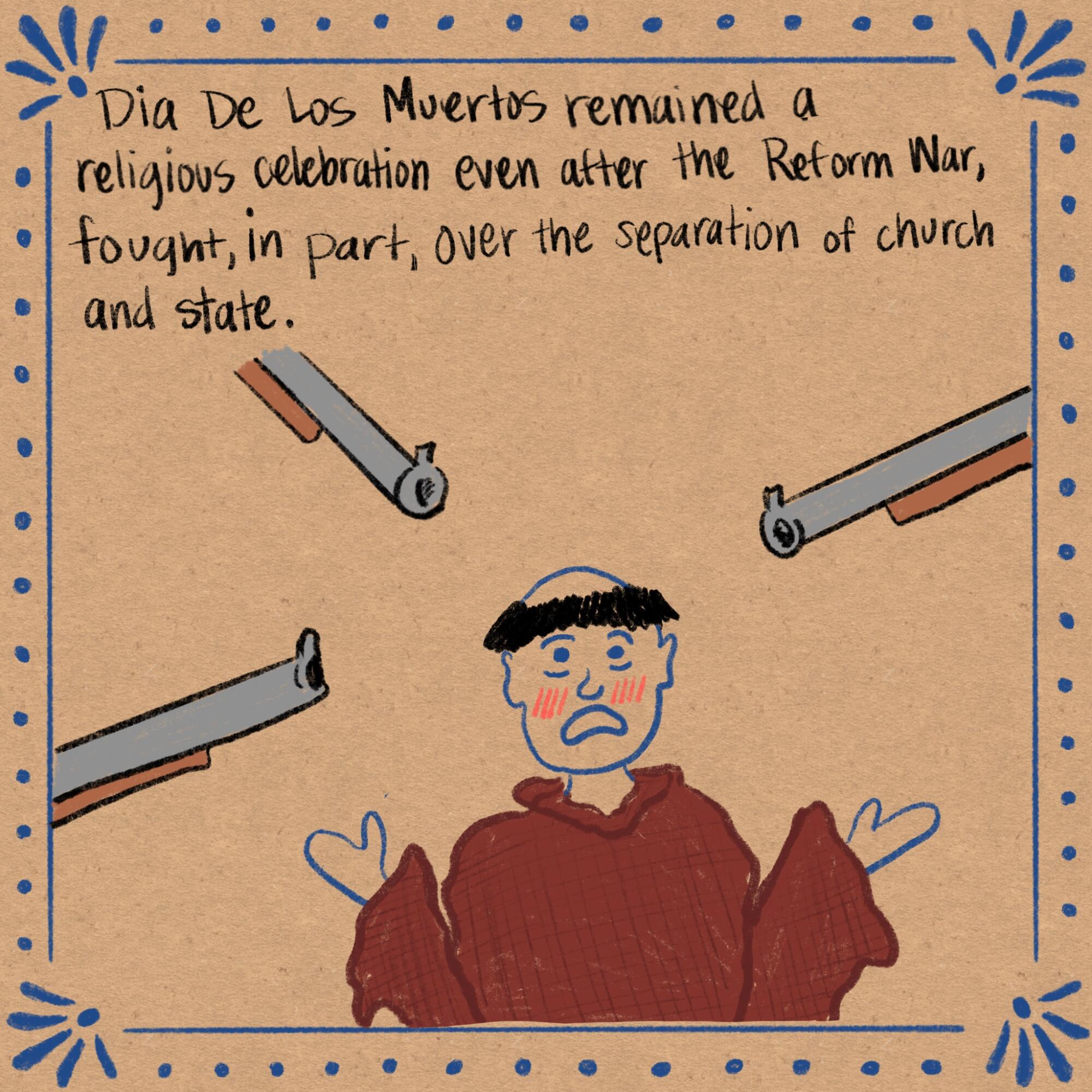
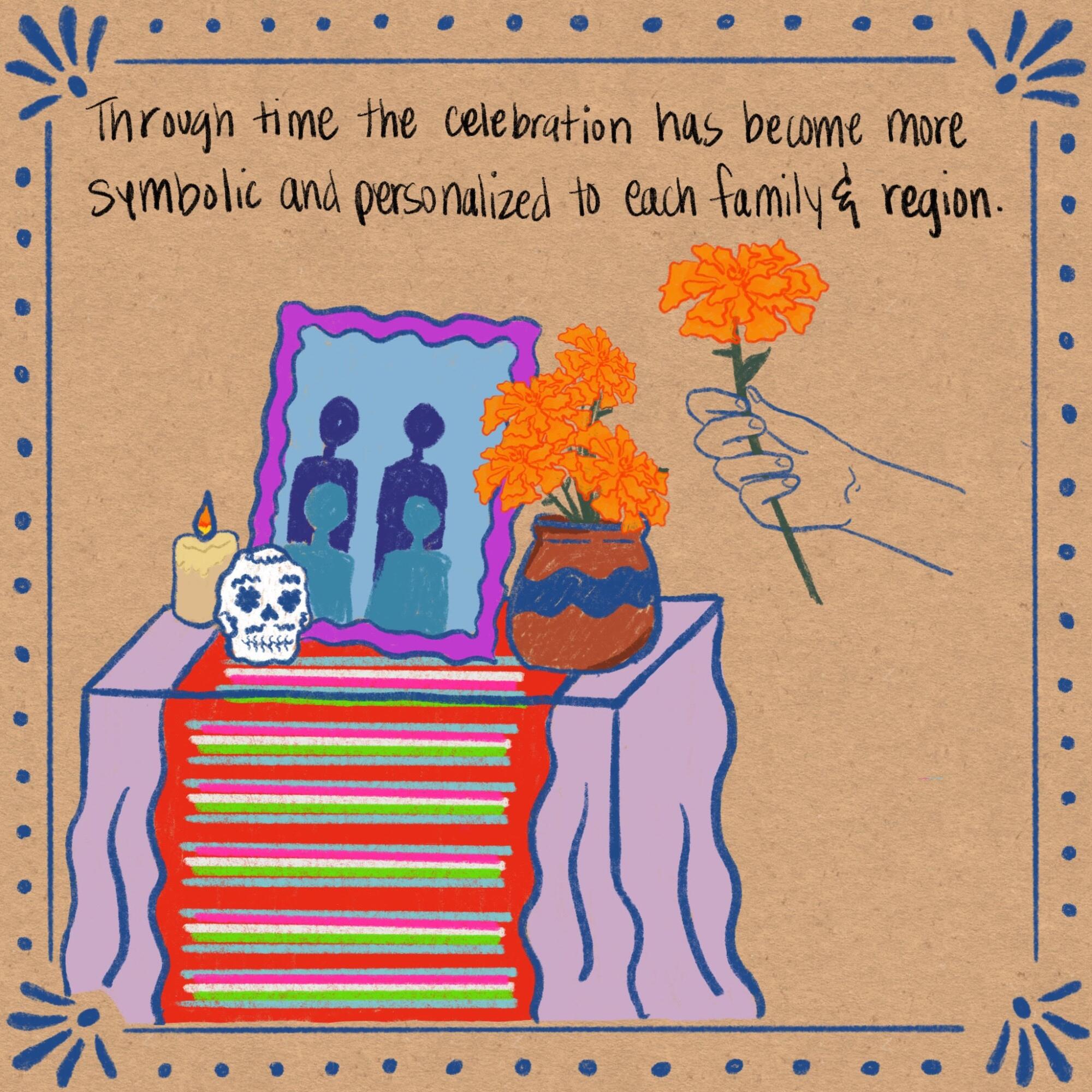
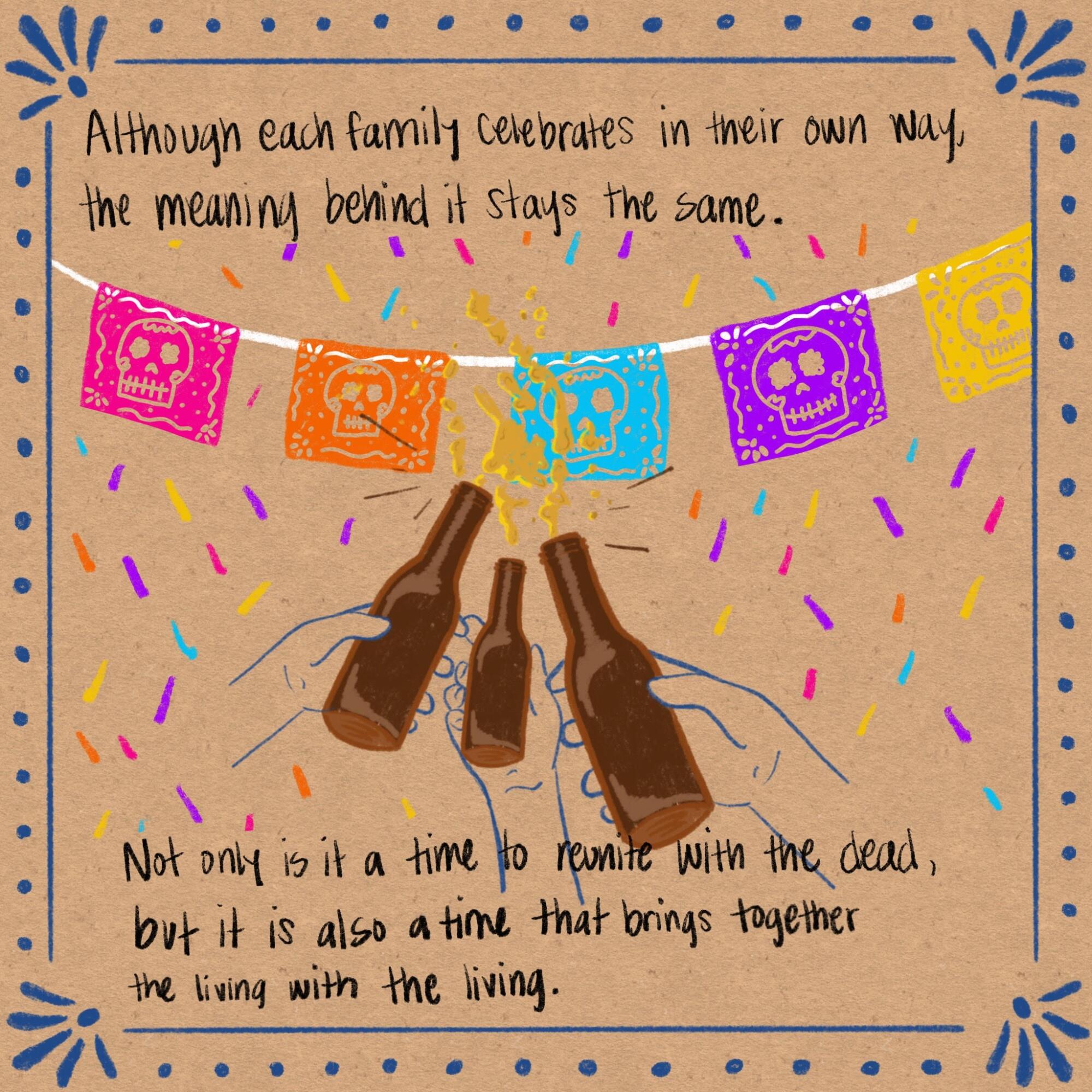
Kimberly Trigueros is a Chicana illustrator and mother from Southern California.
More to Read
The Latinx experience chronicled
Get the Latinx Files newsletter for stories that capture the multitudes within our communities.
You may occasionally receive promotional content from the Los Angeles Times.






